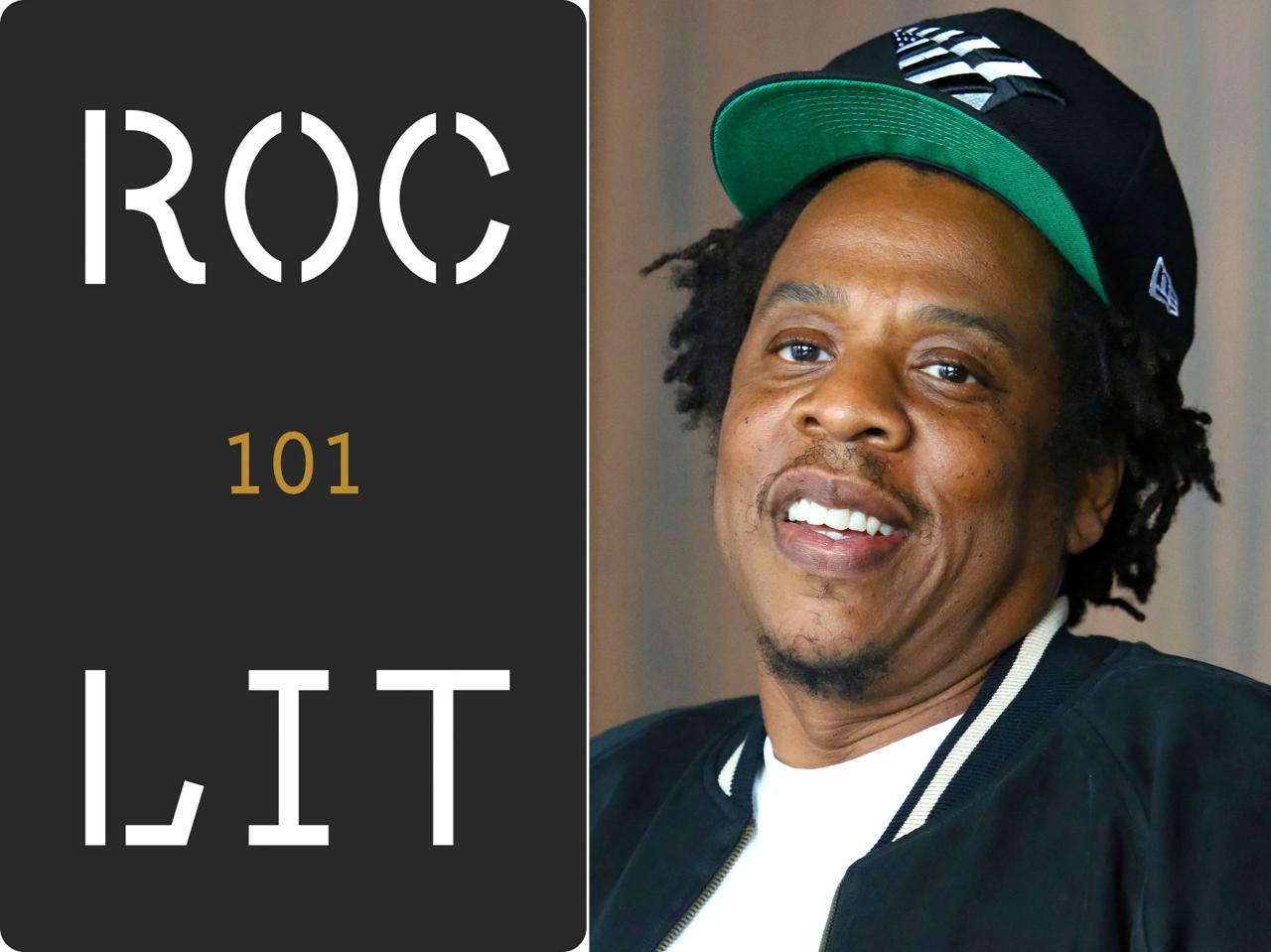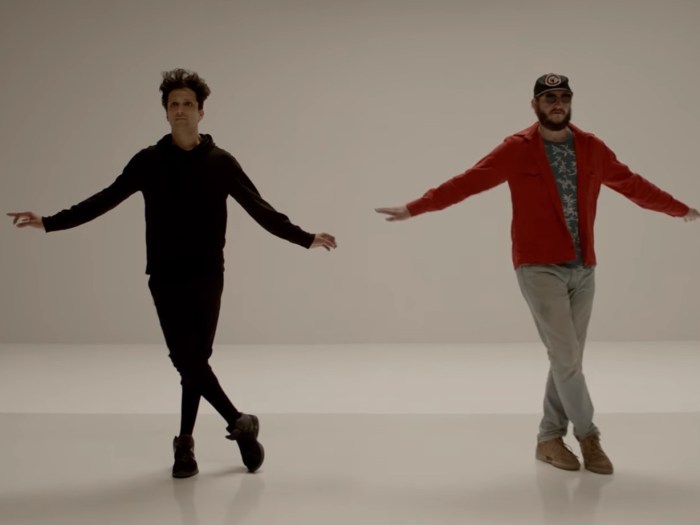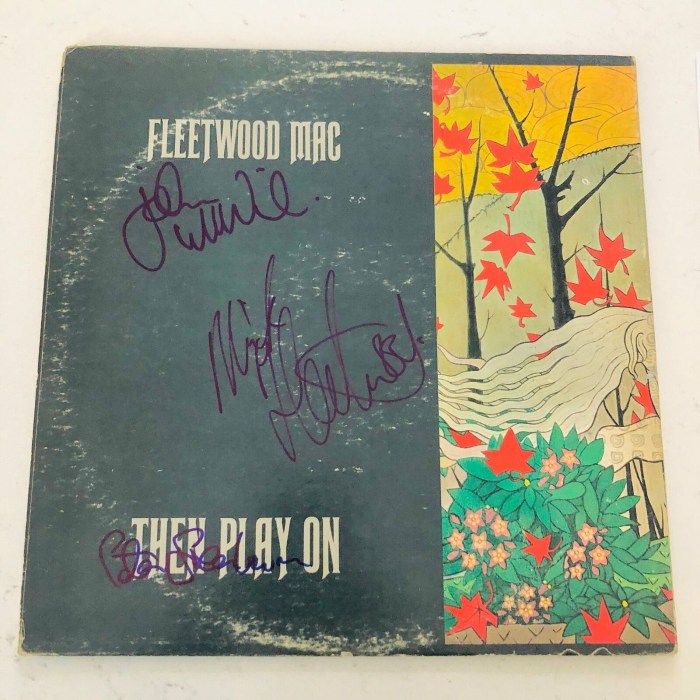Relieve Eye Strain with Reflexology: This guide explores the fascinating connection between your feet, hands, and eye health. Reflexology, a gentle practice that involves applying pressure to specific points on the body, can potentially alleviate eye strain symptoms. We’ll delve into the underlying principles, common symptoms, and effective techniques for using reflexology to target pressure points related to eye health.
Discover how this ancient practice might offer a holistic solution for managing eye fatigue and discomfort.
From identifying common symptoms of eye strain, like headaches and dry eyes, to understanding the link between stress and vision problems, this guide provides a comprehensive overview. We’ll explore various reflexology techniques, highlighting the importance of gentle pressure and proper application. Case studies and client experiences will illustrate the potential benefits of reflexology, while precautions and contraindications are discussed to ensure safe and effective practice.
Introduction to Reflexology for Eye Strain Relief
Reflexology, an ancient healing practice, offers a potential pathway to alleviate eye strain. It works by applying pressure to specific points on the feet and hands, believed to correspond to different parts of the body, including the eyes. This gentle approach may help stimulate the body’s natural healing mechanisms and promote relaxation, leading to a reduction in eye strain symptoms.
While reflexology is not a substitute for medical treatment, it can be a complementary therapy for those seeking relief from this common ailment.The basic principle of reflexology rests on the idea of a network of interconnected points on the feet and hands that correspond to various organs and body systems. Applying pressure to these specific points is believed to stimulate the corresponding areas, potentially influencing the body’s natural healing processes.
This is a holistic approach, recognizing the interconnectedness of the body’s systems. It’s important to remember that these are traditional beliefs, and further research is always encouraged to explore the mechanisms at play.
Relationship Between Feet, Hands, and Eye Health in Reflexology
Reflexology charts map specific areas on the feet and hands to corresponding parts of the body, including the eyes. These maps are based on traditional beliefs about energy pathways and the interconnectedness of the body’s systems. Stimulating these points through pressure is thought to promote relaxation, reduce tension, and ultimately improve circulation, which may benefit eye health. The theory behind this is that by influencing specific points on the feet and hands, you are indirectly impacting the associated areas of the body, including the eyes.
Potential Effects on the Body’s Natural Healing Process
Reflexology aims to balance the body’s energy flow and promote relaxation. When the body is relaxed, it’s better able to utilize its natural healing mechanisms. This relaxation can help reduce stress and tension, which may contribute to eye strain. By applying pressure to specific points, reflexologists believe they can stimulate the body’s self-healing abilities, potentially alleviating symptoms of eye strain.
Relieving eye strain through reflexology is a fantastic way to unwind after a long day. It’s all about those pressure points, and honestly, sometimes a little pampering is just what the doctor ordered. Speaking of pampering, did you hear about the awesome Courtney Love tribute featuring Michael Stipe and Chloe Sevigny? This event sounds like a total blast, and a perfect excuse for a little self-care, followed by a good, relaxing reflexology session.
Focusing on those pressure points can really help release tension, which can then ease eye strain. Definitely worth trying for a more comfortable tomorrow!
It’s important to note that this is a complementary therapy, and further research is needed to understand the full extent of its effects on the body’s healing process.
Pressure Points and Their Potential Impact
Applying pressure to specific points on the feet and hands is a central aspect of reflexology. These points are believed to correspond to specific organs and systems, including the eyes. Pressure on these points is thought to stimulate the associated areas, potentially influencing their function and reducing discomfort. The exact mechanisms through which reflexology may affect the body are still under investigation, but many practitioners report positive experiences.
For example, applying pressure to points associated with the eyes may help reduce tension and improve circulation, potentially easing eye strain.
Identifying Eye Strain Symptoms
Recognizing the signs of eye strain is crucial for effective reflexology treatment. Understanding the various symptoms allows for personalized care and helps identify the underlying causes, leading to more targeted and effective reflexology sessions. By pinpointing the specific triggers and symptoms, you can better tailor your reflexology techniques to address the root cause of the discomfort.
Common Symptoms of Eye Strain
Eye strain manifests in a variety of ways, impacting not only vision but also the surrounding head and neck areas. Common symptoms include headaches, often described as a dull ache or pressure behind the eyes, and dry, irritated eyes. Blurred vision, especially when focusing on objects at different distances, is another telltale sign. Some individuals experience a feeling of tightness or soreness in their eyes and surrounding muscles, and even light sensitivity.
Other less common but still important symptoms are double vision, and eye twitching.
Signs and Symptoms for Evaluation
To effectively evaluate a client’s eye strain, a comprehensive assessment of symptoms is essential. This includes gathering detailed information about the specific discomfort experienced. Questions about the duration, intensity, and frequency of symptoms provide valuable insights into the nature and severity of the eye strain. A thorough examination of visual habits, including the amount of time spent on screens and the presence of any pre-existing eye conditions, will also assist in the evaluation process.
Activities Contributing to Eye Strain
Numerous activities can contribute to eye strain. Prolonged screen time, whether it’s from computers, smartphones, or tablets, is a major culprit. Reading for extended periods, especially in dimly lit environments, can also strain the eyes. Focusing on fine details, such as intricate artwork or sewing, can also lead to eye fatigue. Individuals with jobs demanding intense visual focus, like surgeons or graphic designers, are particularly vulnerable to eye strain.
Stress and Eye Strain Connection
The connection between stress and eye strain is undeniable. Stress often leads to muscle tension in the head and neck, including the eye muscles. This heightened tension can contribute to eye strain symptoms like headaches and blurred vision. When under stress, individuals may also experience poor sleep habits, which can further exacerbate eye strain. Understanding this correlation is crucial for a holistic approach to eye strain management.
Comparison of Eye Strain Types
| Type of Eye Strain | Symptoms | Potential Causes | Possible Reflexology Points |
|---|---|---|---|
| Computer Vision Syndrome | Headaches, dry eyes, blurred vision, and eye fatigue. These symptoms are often worsened by extended periods of computer use. | Prolonged screen time, improper screen positioning, inadequate lighting, and poor posture. | Foot arch, ankle, and hand reflex points are often targeted for Computer Vision Syndrome. Stimulating these points can help alleviate the strain on the eye muscles. |
| Eye Fatigue | Blurred vision, eye pain, and increased sensitivity to light. | Lack of sleep, poor posture, and excessive eye strain from reading, working on computers, or other visual tasks. | Top of the foot, lower leg reflex points are often targeted for eye fatigue, as these points are linked to the muscles and nerves responsible for eye movement. |
Reflexology Techniques for Eye Strain Relief
Reflexology, a gentle practice involving applying pressure to specific points on the feet, can effectively alleviate eye strain. By targeting pressure points connected to the eyes and head, you can encourage relaxation and improve blood flow to the area, easing tension and promoting comfort. This approach complements other methods for managing eye strain, such as taking breaks and using eye drops.
Relieving eye strain through reflexology is a fantastic way to unwind after a long day. But if you’re looking for a different kind of release, you might be considering which Destiny 2 collectors edition is the best fit for you. destiny 2 collectors editions which one is right for you is a great resource to help with that decision.
Ultimately, whether you choose a deep tissue massage or a collector’s edition, finding a method that helps relax your eyes is key to a good night’s rest.
Specific Reflexology Techniques for Eye-Related Pressure Points
Targeting specific reflex points on the feet mirrors the body’s interconnectedness. Applying pressure to these points stimulates the corresponding nerves and organs, prompting a cascade of physiological responses that contribute to eye strain relief. This stimulation can ease tension in the muscles surrounding the eyes, promoting relaxation and comfort.
Methods of Applying Pressure on Foot Reflex Points
Several methods exist for applying pressure to foot reflex points. A crucial aspect is the consistency of the pressure, avoiding sudden or excessive force. Gentle, controlled pressure allows for a more effective and comfortable treatment.
- Light Pressure, Circular Motion: For the eye point, a light, circular motion is ideal. Imagine tracing small circles on the pressure point with your fingertips, applying just enough pressure to feel a gentle warmth spreading throughout the area.
- Deep Pressure, Holding for 2 Minutes: The head point, located at the top of the foot, often requires more sustained pressure. Press firmly, hold the pressure for approximately two minutes, and release slowly. This prolonged pressure encourages relaxation and promotes a sense of well-being in the area.
Correct Pressure Point Treatment, Relieve Eye Strain with Reflexology
Maintaining consistent and gentle pressure is essential. Rapid or erratic pressure can be uncomfortable and may not provide the desired effect. Applying steady, controlled pressure allows for a more effective treatment, minimizing discomfort and maximizing relaxation.
Importance of Gentle and Controlled Pressure
Applying gentle and controlled pressure is critical for the efficacy and safety of reflexology. Sudden or forceful pressure can be uncomfortable and potentially harmful, whereas a gentle approach promotes relaxation and avoids potential injury.
Location of Key Reflexology Points for Eye Health
The table below illustrates the location of key reflexology points associated with eye health. Understanding these locations enables you to effectively target these points for optimal relief.
| Reflex Point | Location | Description | Pressure Technique |
|---|---|---|---|
| Eye Point | Sole of the foot, near the center | Connected to the optic nerve and eye muscles. | Light pressure, circular motion (2-3 minutes) |
| Head Point | Top of the foot, near the ankle | Connects to the head, including the eyes. | Deep pressure, holding for 2-3 minutes. |
Preparing for a Reflexology Session
Reflexology, a gentle yet powerful technique, can significantly alleviate eye strain. A well-prepared session enhances the effectiveness of the treatment, promoting deeper relaxation and maximizing the benefits for the client. Proper preparation involves both setting the physical environment and ensuring the client’s comfort and readiness.Preparing the space and the client creates a conducive atmosphere for the therapeutic process, which in turn enhances the experience for the recipient.
A calm and serene environment allows the body and mind to unwind, promoting a deeper connection between the practitioner and the client. This focused environment allows for optimal relaxation and a more successful treatment.
Creating a Calming Atmosphere
A calming atmosphere is essential for a successful reflexology session. Soft lighting, soothing music, and calming scents can significantly contribute to the overall experience. Dim the overhead lights, perhaps using lamps with warm-toned bulbs. Gentle instrumental music, or even nature sounds, can create a relaxing ambiance. Essential oils like lavender or chamomile can be diffused to enhance the calming effect.
Avoid strong scents that might be overwhelming or trigger sensitivities. The goal is to minimize distractions and promote a sense of peace and tranquility.
Preparing the Client
The client’s comfort and relaxation are paramount. Encourage the client to dress in comfortable, loose-fitting clothing. This allows for ease of movement and reduces any physical discomfort during the session. Explain the process and the expected sensations. Address any concerns or anxieties the client might have, and ensure they feel comfortable communicating their needs throughout the session.
Relieving eye strain through reflexology is a surprisingly effective method. While I was researching this, I stumbled upon a fascinating article about Modest Mouse’s performance of “Pups to Dust” on Seth Meyers, which you can check out here. It got me thinking, maybe a little pressure point massage could help with my eye fatigue after that concert! Either way, reflexology can be a great way to ease those tired peepers.
A warm and welcoming atmosphere will help the client relax and focus on the treatment.
Client Comfort and Relaxation
Client comfort is key. Provide a comfortable and supportive surface for the client to lie or sit on, ensuring proper spinal alignment. A soft blanket or a supportive cushion can enhance comfort. Offer a warm beverage, like herbal tea, to further relax the client. Ensuring the client’s comfort is not just a gesture; it is a critical element of the therapeutic process.
A comfortable and relaxed client is more receptive to the treatment and more likely to experience the full benefits of reflexology.
Essential Items for a Reflexology Session
A well-stocked reflexology kit ensures smooth and efficient sessions. A selection of essential items will greatly facilitate the process, and include:
- Reflexology chart: A clear and well-organized chart allows the practitioner to easily locate and target specific reflexes. This is essential for accurate treatment.
- Essential oils (optional): These oils, like lavender or chamomile, can be used for aromatherapy to enhance the calming effect of the session. Their use should be carefully considered, as some clients might have sensitivities.
- Soft blankets or pillows: These items provide comfort and support for the client during the session. Ensure they are soft and clean.
- Warm beverage (optional): A warm herbal tea or water can further contribute to relaxation and well-being. Offer choices for different preferences.
- Comfortable clothing: Comfortable, loose-fitting clothing for the client will enhance their comfort and relaxation. This includes comfortable pajamas or clothing made of soft materials.
- Clean and soft towels: These are needed for both client and practitioner comfort, and are crucial for maintaining hygiene.
A well-prepared reflexology session, with a focus on creating a calm environment and ensuring client comfort, maximizes the benefits of the treatment. Proper preparation significantly enhances the effectiveness of reflexology for relieving eye strain.
Case Studies and Client Experiences: Relieve Eye Strain With Reflexology
Reflexology, a gentle yet powerful practice, offers a unique pathway to alleviate eye strain. Numerous clients have reported significant improvements in their eye health and overall well-being after undergoing reflexology treatments. This section delves into real-world experiences, showcasing the effectiveness of reflexology in addressing eye strain symptoms and promoting healing.
Client Success Stories
Individual responses to reflexology treatments vary, highlighting the personalized nature of this therapeutic approach. While some clients experience rapid relief, others may require a series of sessions for optimal results. Consistency and patience are key factors in achieving lasting improvements.
Positive Client Feedback
Clients often express gratitude for the soothing and relaxing nature of reflexology sessions. They frequently comment on the reduction in eye strain symptoms, such as headaches, blurred vision, and dry eyes. Many appreciate the holistic approach, recognizing the interconnectedness of mind and body in managing eye strain. Some clients even report improved sleep quality and reduced stress levels as a result of the treatment.
Individual Responses and Treatment Effectiveness
It’s crucial to understand that each person responds differently to reflexology. Factors like the severity of eye strain, lifestyle choices, and underlying health conditions can influence the treatment’s effectiveness. A personalized approach, tailored to the specific needs of each client, is essential for maximizing results.
Tracking Treatment Effectiveness
Tracking the effectiveness of reflexology treatments involves monitoring changes in eye strain symptoms. This can be achieved through self-reporting, using symptom scales, or by keeping a detailed log of experiences. Regular follow-up appointments allow for adjustments to the treatment plan as needed, ensuring the highest level of care and optimal outcomes.
Client Experience Table
| Client | Symptoms | Treatment | Results |
|---|---|---|---|
| Sarah | Persistent dry eyes, frequent headaches, and blurry vision | Weekly reflexology sessions for four weeks, coupled with lifestyle modifications, such as increased hydration and eye exercises. | Significant reduction in dry eye symptoms, noticeably reduced headaches, and improved focus. Reported a substantial increase in comfort during prolonged computer use. |
| David | Blurred vision, particularly after extended periods of work at a computer, eye fatigue, and mild tension headaches. | Bi-weekly reflexology sessions for six weeks, with additional guidance on proper posture and ergonomic adjustments. | Experienced a noticeable improvement in clarity and reduced eye fatigue after computer work. Reported less frequent and milder headaches, along with an overall sense of relaxation. |
| Emily | Dry eyes, severe eye strain, and difficulty focusing, especially when reading. | Twice-weekly reflexology sessions for eight weeks, incorporating eye drops and a consistent sleep schedule. | Marked improvement in eye moisture and reduced strain, particularly when reading. Improved focus and concentration. Experienced better sleep quality. |
Precautions and Contraindications
Reflexology, while a gentle and often beneficial practice, is not a substitute for medical advice. Understanding its limitations and potential risks is crucial for a safe and effective experience. This section Artikels potential contraindications and precautions to ensure you receive the best possible care.Reflexology, like any therapeutic approach, has specific situations where its application might not be suitable.
A thorough understanding of these precautions and contraindications can help prevent potential complications and ensure that reflexology is used responsibly and effectively.
Potential Risks and Contraindications
Reflexology, when performed by a qualified practitioner and with appropriate precautions, is generally considered safe. However, certain conditions can make reflexology unsuitable or even potentially harmful. Understanding these contraindications is vital for both practitioners and clients.
- Active Infections: Infections in the area being treated, such as open wounds or skin infections, can increase the risk of spreading the infection or causing further discomfort. These should be addressed before reflexology sessions.
- Certain Medical Conditions: Individuals with certain medical conditions, including severe circulatory issues, blood clotting disorders, or uncontrolled diabetes, should consult their physician before undergoing reflexology. The practitioner should be aware of any pre-existing conditions to ensure appropriate adjustments to the session.
- Pregnancy: While some practitioners believe reflexology can be beneficial during pregnancy, it’s crucial to seek a practitioner experienced in pregnancy reflexology. Avoid pressure on the abdomen or lower back.
- Recent Surgery or Injury: The body requires time to heal after surgery or injury. It is important to avoid reflexology until the affected area has sufficiently recovered. The practitioner should be informed of any recent surgery or injury to determine the appropriateness of the session.
- Mental Health Conditions: Individuals with certain mental health conditions may find reflexology beneficial, but the practitioner must be aware of potential sensitivities and adjust the session accordingly. If the client experiences heightened anxiety or distress during the session, it’s crucial to stop and address the concerns.
Importance of Professional Guidance
Professional guidance is essential for safe and effective reflexology. Practitioners should be licensed and experienced in the techniques and understand the client’s specific health conditions.
- Qualified Practitioners: Seeking treatment from a licensed and experienced reflexologist ensures the practitioner possesses the knowledge and skills to safely and effectively address the client’s concerns. Always verify the practitioner’s credentials.
- Open Communication: Honest and open communication between the client and the practitioner is crucial. Clients should feel comfortable discussing any concerns or health conditions with their practitioner. Full disclosure is necessary for appropriate treatment.
- Adjustments and Modifications: The practitioner should be flexible and able to adjust the session based on the client’s feedback and response. This responsiveness is vital to ensuring the client’s comfort and safety.
Identifying and Addressing Potential Complications
While rare, potential complications can arise during or after a reflexology session. Recognizing and addressing these issues promptly is essential.
- Pain or Discomfort: Persistent or excessive pain during a reflexology session should be immediately addressed by the practitioner. The practitioner should adjust the pressure or technique as needed.
- Inflammation or Swelling: Any signs of inflammation or swelling at the treatment site should be reported to the practitioner and evaluated for potential underlying causes.
- Feeling unwell: If the client experiences any unusual symptoms or feels unwell after the session, the client should seek medical attention immediately. This could be a sign of a pre-existing condition exacerbated by the session.
Potential Complications and Prevention
A comprehensive understanding of potential complications can aid in prevention.
- Increased sensitivity or discomfort: Proper preparation, including communication between the client and the practitioner, can mitigate the risk of increased sensitivity or discomfort.
- Adverse reactions to pressure: Practitioners should adjust pressure based on the client’s feedback and individual tolerance. Regular communication ensures the client is comfortable throughout the session.
- Exacerbation of pre-existing conditions: Full disclosure of medical history is vital to avoid exacerbating pre-existing conditions.
Integrating Reflexology into a Holistic Approach

Reflexology, when integrated into a comprehensive eye strain relief plan, can significantly enhance the overall well-being of the eyes and the body. It’s not a replacement for conventional medical care but a powerful complementary therapy that works synergistically with other approaches. This holistic approach recognizes the interconnectedness of mind, body, and spirit and addresses the root causes of eye strain.A holistic approach to eye strain relief acknowledges that the eyes are intricately linked to the entire body.
Addressing stress, posture, and lifestyle factors alongside targeted reflexology techniques creates a more sustainable solution for long-term eye health. By working with the body’s natural healing mechanisms, reflexology complements other therapies, fostering a more effective and lasting relief from eye strain.
Complementary Therapies for Eye Strain Relief
Reflexology is most effective when integrated with other therapies to address the multifaceted nature of eye strain. Combining reflexology with other methods can provide a more comprehensive approach to managing and alleviating symptoms.
- Eye Exercises: Incorporating gentle eye exercises, like those focusing on eye muscle relaxation and improving focus, can complement reflexology by strengthening eye muscles and improving blood circulation to the eyes. Regular eye exercises, combined with reflexology, can significantly improve the long-term health of the eyes. Examples include blinking exercises and focusing on near and far objects.
- Lifestyle Adjustments: Changes in lifestyle habits like reducing screen time, maintaining proper posture, and ensuring adequate hydration directly impact eye health. Reflexology works alongside these lifestyle adjustments to create a more comprehensive approach, supporting the body’s natural healing processes. Adequate sleep and stress reduction are crucial for eye health, and reflexology supports the body in managing these aspects.
- Nutritional Support: A balanced diet rich in antioxidants and nutrients essential for eye health can strengthen the eyes’ natural defenses. Combining nutritional support with reflexology can optimize the body’s ability to heal and support the overall health of the eyes. Examples include incorporating foods rich in vitamins A, C, and E, and omega-3 fatty acids.
Importance of a Comprehensive Approach
A comprehensive approach to eye strain relief is crucial for long-term eye health. Ignoring the interconnectedness of various factors contributing to eye strain can lead to temporary relief but potentially perpetuate the underlying issues. This multifaceted approach acknowledges the role of stress, diet, posture, and other lifestyle factors in influencing eye health.
- Addressing Root Causes: Instead of merely treating symptoms, a comprehensive approach delves into the root causes of eye strain. This can involve identifying and mitigating stressors, adjusting posture, and making dietary changes.
- Sustainable Relief: A holistic approach ensures long-term eye health and sustainable relief from strain. This is achieved by tackling the underlying factors that contribute to eye strain.
- Improved Overall Well-being: The benefits extend beyond just eye strain relief. A comprehensive approach can positively impact overall health and well-being, contributing to a more balanced and resilient individual.
Examples of Lifestyle Changes
Lifestyle changes play a significant role in improving eye health and reducing eye strain. These changes can significantly improve overall well-being.
- Regular Breaks: Taking regular breaks from screens, even short ones, allows the eyes to rest and recover. This is crucial for reducing strain and promoting better eye health. Incorporate frequent breaks to look at distant objects and move around.
- Proper Lighting: Adequate lighting is essential for reducing eye strain, especially when using screens. Avoid harsh glare and ensure proper lighting in workspaces and study areas. Optimize lighting to reduce strain on the eyes.
- Hydration: Staying hydrated helps maintain the health and lubrication of the eyes. Drinking enough water is crucial for eye health and comfort.
Resources and Further Learning
Delving deeper into reflexology and its application for eye strain relief opens doors to a wealth of knowledge and practical techniques. This section provides resources for continued learning, from reputable organizations to insightful materials, empowering you to further your understanding and integrate these practices into your own life or professional practice.Exploring various resources allows you to gain a more comprehensive understanding of reflexology’s multifaceted nature and its potential benefits.
This expanded knowledge base can lead to more informed decision-making and effective application of reflexology techniques.
Recommended Resources for Learning
Expanding your knowledge base about reflexology and eye strain relief is crucial for informed application. This section offers a curated list of resources, including books, articles, and websites, to enhance your understanding and provide a deeper dive into the subject.
- Books on Reflexology: Books like “Reflexology for the Eyes” by [Author Name], or “The Complete Guide to Reflexology” by [Author Name], offer comprehensive information and detailed explanations of reflexology principles and techniques. These resources often include practical exercises and case studies to solidify understanding.
- Online Articles and Websites: Numerous websites dedicated to reflexology and alternative therapies provide valuable information and insights. Reliable sources such as the American Reflexology Association website, or articles from reputable health publications like [Journal Name], are great starting points for further research.
- Professional Organizations: Membership in professional reflexology organizations can provide access to updated information, continuing education opportunities, and networking with other practitioners. Staying informed about the latest developments in the field is essential for maintaining expertise.
Finding Qualified Reflexologists
Locating a qualified reflexologist is an important step in accessing this therapeutic practice. A well-qualified practitioner can provide safe and effective sessions, tailored to individual needs.
- Professional Organizations: Professional reflexology organizations often maintain directories of certified or licensed practitioners. These directories can help you find qualified practitioners in your area.
- Online Search Engines: Using search engines like Google or Yelp to find reflexologists in your area can provide a starting point for locating potential practitioners. Be sure to check credentials and reviews before selecting a practitioner.
- Referrals: Seeking recommendations from trusted friends, family, or healthcare providers can also lead to qualified reflexologists in your area. Personal testimonials and recommendations from satisfied clients can be valuable indicators of a practitioner’s expertise.
Ongoing Research and Development
Ongoing research and development in the field of reflexology are contributing to a deeper understanding of its potential applications. Studies are exploring its efficacy in various conditions, including eye strain, and new approaches to reflexology are emerging.
- Clinical Trials: Clinical trials are investigating the effectiveness of reflexology for various health conditions, including eye strain. These trials aim to provide evidence-based support for reflexology’s use.
- New Techniques: Reflexology practitioners are constantly exploring and refining techniques, adapting them to better address specific needs and conditions, like eye strain. This evolution of the practice reflects its adaptability and commitment to improvement.
- Holistic Integration: Integrating reflexology with other holistic approaches, such as acupuncture or meditation, may offer synergistic benefits for managing eye strain and promoting overall well-being. Research in this area is still ongoing.
Reputable Organizations
Finding a reliable and trustworthy reflexology organization is essential for staying informed and learning more about the practice. Reputable organizations offer valuable resources and guidance.
| Organization | Website | Contact |
|---|---|---|
| American Reflexology Association | [Insert link here] | [Insert phone number or email here] |
| [Another reputable organization] | [Insert link here] | [Insert contact information here] |
Last Word

In conclusion, Relieve Eye Strain with Reflexology offers a natural, holistic approach to managing eye strain. By understanding the principles of reflexology, identifying symptoms, and learning effective techniques, you can explore this practice to potentially alleviate discomfort and promote overall eye health. Remember that reflexology is a complementary therapy, and consulting with a healthcare professional is crucial for any significant health concerns.
This guide provides a starting point for exploring the potential of reflexology to support your well-being.




























